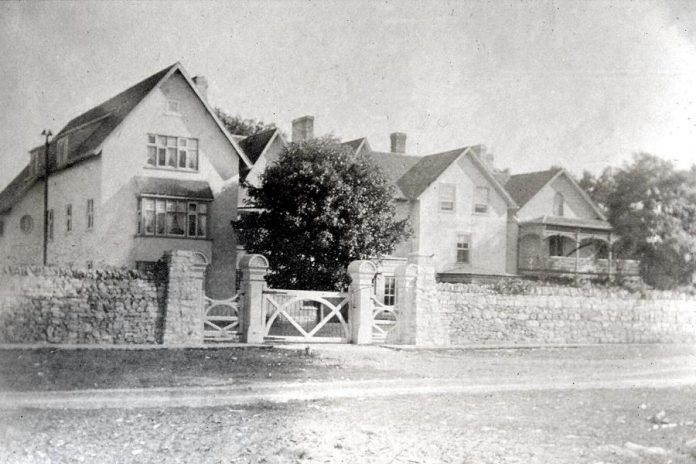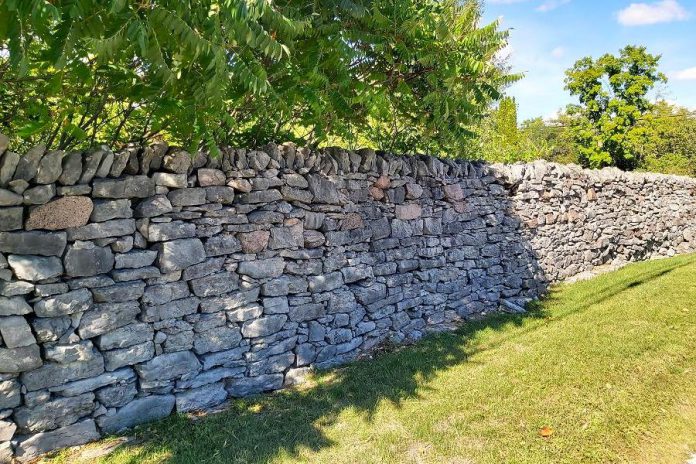
A group of volunteers in Bobcaygeon is working to restore a local historical landmark and are seeking community donations to help fund the project.
When European settlers arrived in Ontario in the 19th century, they brought with them the ancient tradition of dry stone walls — walls constructed from stones without any mortar to hold them together.
Very few dry stone walls are left standing in the Kawarthas, with one notable exception being the Edgewood dry stone wall at 28 Boyd Street in Bobcaygeon.
The wall was commissioned by W.T.C. “Willy” Boyd, the son of 19th-century lumber baron Mossom Boyd, as an aesthetic wall around the family’s former Edgewood estate built in 1891.
While the estate itself was demolished in 2005 (Case Manor long-term care home now stands in its place), a 400-foot stretch of the dry stone wall along Boyd Street remains intact, although sections of the wall are deteriorating and require repair.
In 2020, a group of volunteers known as Environmental Action Bobcaygeon was successful in having the wall protected through a heritage designation, and is now working to restore the wall this summer for its 130th milestone anniversary.
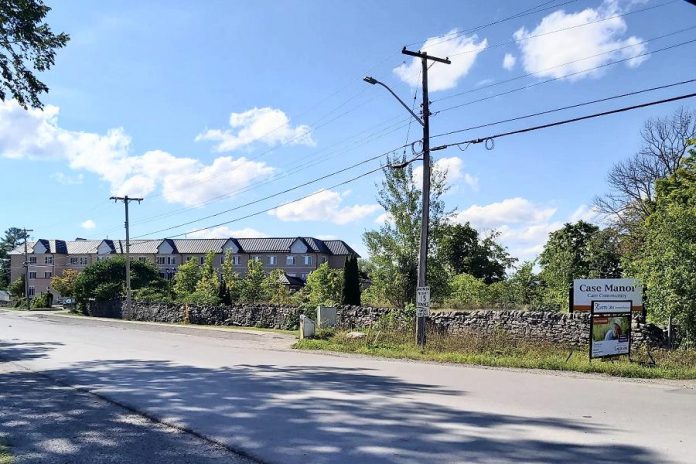
The group has engaged John Shaw Rimmington — a renowned dry stone wall builder and teacher who is also president of the Dry Stone Walling Across Canada organization — to work on the project and to train some volunteers.
While Environmental Action Bobcaygeon has already received several grants and donations towards the estimated $70,000 project cost, including $10,000 from the Bobcaygeon Horticultural Society, it is seeking community donations to the Edgewood Stone Wall Fund at www.edgewoodstonewall.com.
“Now is the time for Bobcaygeon to come together again to help restore and protect the Edgewood wall from further erosion and damage,” says campaign lead Ann Adare. “You can donate to the project at four levels, each representative of one of the unique aspects of dry stone wall construction. All donors will be recognized for their contributions over $25, no matter what level.”
Building a dry stone wall (also known as a drystack wall) requires a high degree of skill as the builder need to fit stones together in such a way that they are kept in place and the wall remains stable. Common in Britain, Scotland, and Ireland, dry stone walls were usually built using field stone by farmers in rural areas for livestock fencing or to mark property boundaries.
The Edgewood stone wall is an example of a double stack wall, the most common type of dry stone wall. Flat stones are used to create two separate walls, with larger stones spanning the two walls to add strength and stability.
The voids between the two walls are filled with smaller stones called hearting stone, with cap stones (also known as cope stones) placed at the top of the finished triangular-shaped wall.
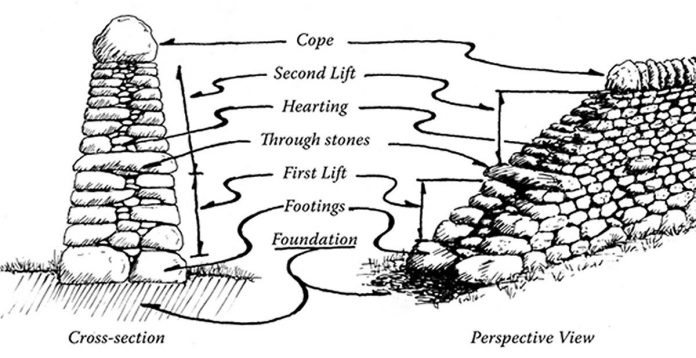
In 2018, UNESCO added the art of dry stone wall construction to its Representative List of the Intangible Cultural Heritage of Humanity, in part stating “Such structures testify to the methods and practices used by people from prehistory to today to organize their living and working space by optimising local natural and human resources.”
In the 19th century, it was common for wealthy families such as the Boyds to construct large estates with picturesque landscape design reflecting a rustic aesthetic, including dry stone walls. Both W.T.C. Boyd’s Edgewood estate and his father’s adjacent estate featured dry stone walls as part of the landscape design.
The Edgewood estate was designed by Peterborough architect John E. Belcher, a friend of the Boyd family, who may also have been involved in the landscape design. While it is unknown who actually built the dry stone wall, it’s believed the Boyd family brought over a stone mason from Scotland.
It’s also believed some of the stone used for the wall came from the construction of the Trent Severn Canal, and that the Boyd family paid local farmers $1 for every load of stone they brought to the Edgewood site.
“With our community’s help, we can ensure our important and beautiful structures live on and preserve our history for future generations,” says Environmental Action Bobcaygeon co-president Richard Fedy.
Environmental Action Bobcaygeon is working in partnership with the Community Foundation of Kawartha Lakes to facilitate community donations. The foundation is providing financial management and team expertise to assist with fundraising efforts for the restoration project.
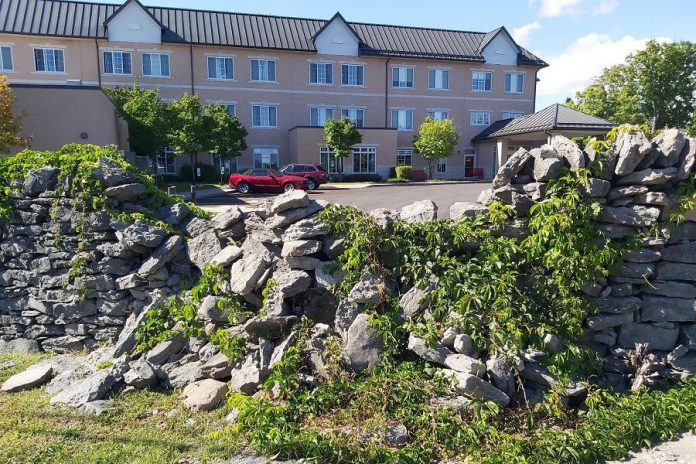
As some stones have been lost over the years, the restoration project will need additional stone to restore the wall.
The current owners of the Mossum Boyd property have donated some of the stone from the dry stone walls around their property, which have largely deteriorated, so the heritage of the Edgewood wall can be maintained.
For more information about the Edgewood Stone Wall restoration project and to donate, visit www.edgewoodstonewall.com. To contact the restoration committee, email edgewoodstonewall@gmail.com.
